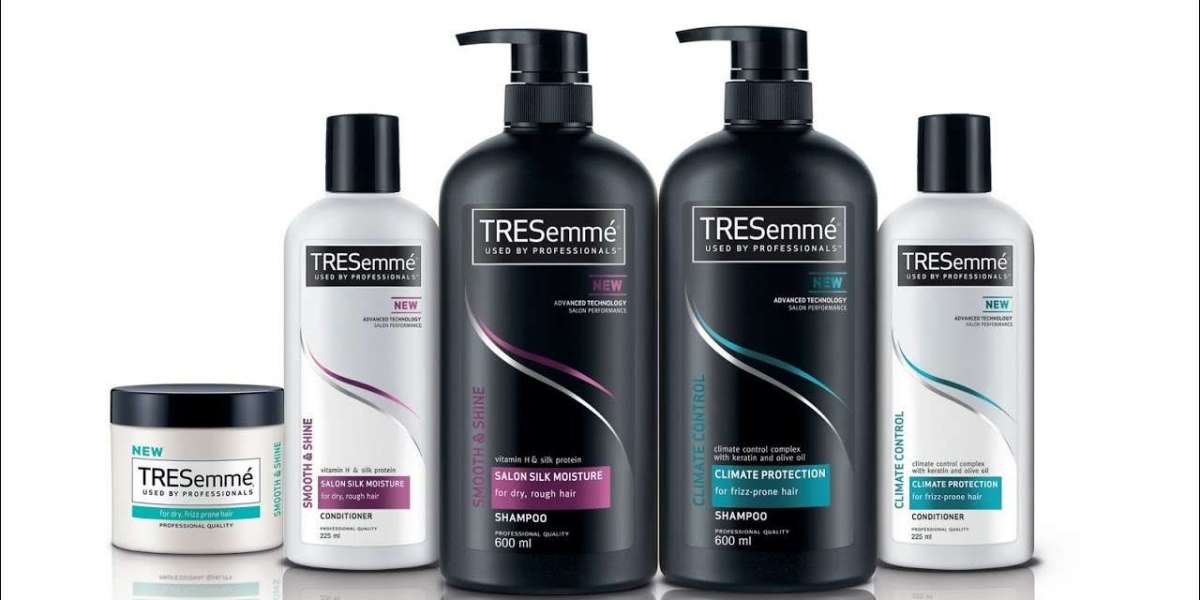Shampoo is an essential part of our hair care routine, acting as the foundation for clean and healthy hair. With a vast array of options available in the market, choosing the right shampoo can be overwhelming. In this guide, we’ll explore the different types of shampoos, their ingredients, how to select the right one for your hair type, and tips for achieving the best results.
The History of Shampoo
The word "shampoo" originates from the Hindi word "chāmpo," which means "to massage." The practice of cleansing hair can be traced back thousands of years. Ancient civilizations, such as the Egyptians and Romans, used various natural ingredients like oils and herbs to cleanse their hair.
By the 19th century, modern shampoo formulations began to emerge. Early shampoos were primarily soap-based, which could be harsh on the scalp and hair. However, advancements in chemistry led to the development of milder, sulfate-free shampoos in the late 20th century, making hair care more effective and accessible.
Types of Shampoo
Understanding the different types of shampoos available is crucial for selecting the right one for your hair needs. Here are some common types:
1. Clarifying Shampoo
Clarifying shampoos are designed to remove buildup from hair products, minerals from hard water, and environmental impurities. They contain stronger cleansing agents than regular shampoos, making them suitable for occasional deep cleaning. However, they can be drying, so it’s best to use them sparingly—once every two weeks or as needed.
2. Moisturizing Shampoo
Moisturizing shampoos are formulated to hydrate and nourish dry or damaged hair. They often contain ingredients like glycerin, shea butter, or natural oils that help retain moisture and improve hair texture. If your hair feels brittle or lacks shine, a moisturizing shampoo can help restore its vitality.
3. Sulfate-Free Shampoo
Sulfate-free shampoos do not contain sulfates, which are harsh detergents that can strip hair of its natural oils. These shampoos are gentler and suitable for sensitive scalps, color-treated hair, or those who prefer a more natural approach to hair care. While they may not lather as much, they effectively cleanse without drying out the hair.
4. Volumizing Shampoo
Volumizing shampoos are designed to add body and fullness to fine or limp hair. They typically contain lightweight ingredients that lift the hair without weighing it down. If you have flat hair and desire more volume, look for volumizing formulations that promise to enhance your hair’s natural bounce.
5. Color-Protecting Shampoo
For those with color-treated hair, color-protecting shampoos are essential. These formulas are designed to preserve color vibrancy and prevent fading. They often contain UV filters and special ingredients that protect the hair from environmental damage, ensuring that your color stays fresh for longer.
6. Dandruff Shampoo
Dandruff shampoos are specifically formulated to treat dandruff and other scalp conditions. They typically contain active ingredients like zinc pyrithione, ketoconazole, or salicylic acid that help control flaking and itching. If you struggle with dandruff, incorporating a medicated shampoo into your routine can provide relief.
7. Dry Shampoo
Dry shampoo is a convenient alternative for those who need to refresh their hair without washing it. It typically comes in spray or powder form and absorbs excess oil, making hair look cleaner and more voluminous. While it’s not a substitute for regular shampooing, dry shampoo is great for busy days or travel.
Key Ingredients to Look For
When choosing a shampoo, understanding its ingredients is crucial. Here are some beneficial components to consider:
1. Natural Oils
Natural oils, such as argan oil, coconut oil, and jojoba oil, are excellent for moisturizing and nourishing the hair. They can help improve shine and reduce frizz, making them ideal for dry or damaged hair.
2. Proteins
Proteins, like keratin and silk protein, help strengthen hair and prevent breakage. If your hair is prone to damage, look for shampoos with protein-rich formulations that can repair and fortify each strand.
3. Botanical Extracts
Botanical extracts, such as aloe vera, chamomile, and green tea, provide additional benefits to the hair and scalp. These ingredients often possess soothing, anti-inflammatory, or antioxidant properties that promote overall scalp health.
4. Vitamins
Vitamins like B5 (panthenol), E, and biotin are essential for healthy hair growth and maintenance. Shampoos enriched with vitamins can nourish the hair follicles and promote stronger, healthier hair.
5. Surfactants
Surfactants are cleansing agents that help remove dirt and oil from the hair. While traditional shampoos often contain sulfates, gentler surfactants like cocamidopropyl betaine are effective and less harsh on the scalp.
Choosing the Right Shampoo for Your Hair Type
Selecting the right shampoo depends on your specific hair type and concerns. Here’s a breakdown of how to choose the best shampoo based on your hair type:
1. Straight Hair
For straight hair, look for lightweight shampoos that won’t weigh down your strands. Consider volumizing or clarifying shampoos to keep your hair fresh and full of life.
2. Wavy Hair
Wavy hair benefits from moisturizing shampoos that enhance texture without causing frizz. Look for products with hydrating ingredients to define and maintain your waves.
3. Curly Hair
Curly hair requires extra moisture and definition. Choose sulfate-free, moisturizing shampoos rich in natural oils and butters to keep curls hydrated and well-defined.
4. Coily Hair
Coily hair thrives on moisture, so opt for shampoos that offer deep hydration and nourishment. Creamy, rich formulas with emollients will help prevent dryness and breakage.
5. Color-Treated Hair
If you have color-treated hair, prioritize color-protecting shampoos to maintain vibrancy. Look for sulfate-free options that gently cleanse without stripping color.
6. Fine Hair
Fine hair benefits from volumizing shampoos that add lift without weighing it down. Avoid heavy formulas that can cause your hair to feel limp.
7. Thick Hair
Thick hair can handle more robust formulations. Choose moisturizing or clarifying shampoos to address any buildup and maintain softness.
How to Properly Shampoo Your Hair
Getting the most out of your shampoo involves more than just applying it to your hair. Here are some essential steps to follow:
1. Wet Your Hair Thoroughly
Before applying shampoo, ensure your hair is thoroughly wet. This helps the shampoo lather better and cleanses effectively.
2. Use the Right Amount
Use a quarter-sized amount of shampoo for medium-length hair. Adjust the amount based on your hair length and thickness. Applying too much can lead to buildup and make rinsing more challenging.
3. Focus on the Scalp
When shampooing, concentrate on massaging the scalp rather than the ends of your hair. This helps remove dirt and oil from the scalp, promoting a healthier environment for hair growth.
4. Rinse Thoroughly
Rinse your hair thoroughly to ensure all the shampoo is washed away. Any residue can lead to buildup and dullness.
5. Repeat if Necessary
If your hair feels particularly dirty or oily, consider washing it twice. The first wash removes dirt, while the second cleanses the hair and scalp thoroughly.
6. Follow Up with Conditioner
Always follow up with a conditioner suited to your hair type. Conditioner helps restore moisture, detangle hair, and protect it from damage.
Common Shampoo Myths Debunked
1. Myth: More Lather Means Better Cleaning
Many people believe that the more a shampoo lathers, the better it cleans. In reality, lather is mainly due to surfactants, and some sulfate-free shampoos may not produce much lather but can still cleanse effectively.
2. Myth: You Should Shampoo Every Day
While some people may need to shampoo daily due to oily hair or excessive product use, most individuals can benefit from shampooing every other day or even less frequently. Overwashing can strip the scalp of natural oils, leading to dryness and irritation.
3. Myth: Expensive Shampoo Is Always Better
Price doesn’t always equate to quality. While premium shampoos may offer unique benefits or ingredients, there are plenty of affordable options that work just as well for various hair types.
4. Myth: You Should Skip Shampoo When Using Conditioner
While conditioner can help hydrate hair, it does not cleanse the scalp. Skipping shampoo can lead to buildup, especially if you use styling products.
5. Myth: Shampoo Is Only for Hair
Shampoo is primarily designed for hair, but it can also help cleanse the scalp. However, if you have a scalp condition, consult with a dermatologist for the best treatment options.
Tips for Maintaining Healthy Hair
In addition to choosing the right shampoo, incorporating these tips can help maintain healthy hair:
1. Limit Heat Styling
Excessive heat can cause damage and dryness. Minimize the use of heat styling tools, or use them on lower settings to protect your hair.
2. Protect Your Hair from the Sun
UV rays can damage hair, leading to dryness and color fading. Wear hats or use UV-protective sprays when spending time outdoors.
3. Trim Regularly
Regular trims help remove split ends and prevent further damage. Aim for a trim every six to eight weeks.
4. Stay Hydrated
Drinking plenty of water keeps your hair and scalp hydrated. A balanced diet rich in vitamins and minerals also promotes healthy hair growth.
5. Use a Silk Pillowcase
Switching to a silk pillowcase can reduce friction while you sleep, helping to prevent breakage and frizz.
6. Be Gentle When Brushing
Use a wide-tooth comb or a brush designed for wet hair to avoid breakage. Start detangling from the ends and work your way up to the roots.
Conclusion
Understanding shampoo in UK and its various types is essential for maintaining healthy hair. By choosing the right product for your hair type and following proper washing techniques, you can achieve beautiful, vibrant locks. Remember to stay informed about the ingredients and their benefits, and don’t hesitate to experiment to find what works best for you.
For a more tailored hair care experience, consider exploring [Purely You UK] for high-quality, customized shampoo options that cater to your unique hair needs. Embrace the journey to healthier hair with knowledge and the right products!








